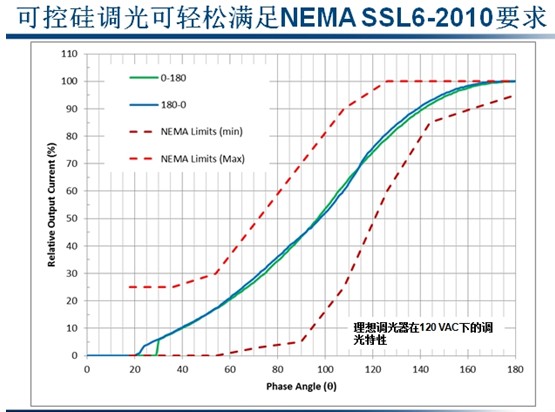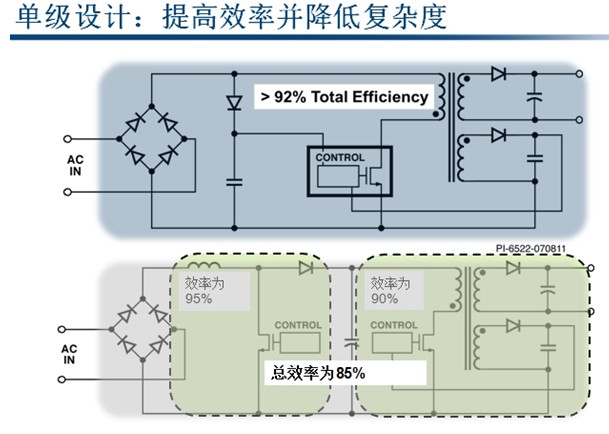2012 is about to pass, this year is mixed for the LED industry. Although many countries including China have already banned the sale of incandescent lamps, the sales of LED lamps have not exploded as scheduled, but there have been many chain storms in which lamps and lanterns manufacturers have closed down. However, there are also manufacturers who are smiling and earning a lot of money. Overall, this year, the LED market is a normal year of adjustment. For the LED lighting market in 2013, the lowest retail price of LED bulbs replacing 40 watt (W) incandescent lamps. The price has reached a sweet spot of $10, and the industry is optimistic that the overall LED lighting market will be warmer next year. Therefore, what the industry has to do now is to do a good job in technical reserve and program selection, and only to invest fully when the market breaks out. Here, we will talk about the four trends of the 2013 LED lighting solutions in conjunction with the latest releases from several major LED manufacturers such as Power Integrations. Another challenge of dimming technology is compatibility. Now there is no solution that can be 100% compatible with dimmers, so it can be done 80% (90%) or more. Now it is said to be able to do this. The proportion is Power Integrations, it seems that PI does a lot of work in dimming. With the gradual popularization of LED lamps, the upgrade of dimming technology can bring more and better experiences to users, and it will become a new selling point. You can pay attention to this function when choosing a solution. In support of dimming mode, manufacturers generally support thyristor dimming and PWM dimming. Figure 3 test parameters According to McKinsey's market research report "Lighting the Way", the price of LED bulbs fell at a rate of around 9% per quarter. In order to compensate for the price drop, IC component manufacturers will adopt a high integration strategy to enhance the function of the driver IC. Many manufacturers now adopt integrated MOSFET strategy to integrate 200V (500V) or 400V (600V) MOSFETs and provide a complete protection solution. The LED solution can be made lighter and the reliability is improved. The current PI solution is to integrate 650V and 725V high voltage MOSFETs. LED underwater lights add
that extra sparkle to any pool, pond or water feature. They can be positioned
to light that waterfall and with a color filter can change the style and look
of any fountain. With the use of a 12/24 volt – low voltage system the fixtures
are small and low in profile and provide high lumen at a low cost. Led Underwater Fountain Light,Led Underwater Light,Led Underwater Pool Lighting,Light Underwater ZHONGSHAN G-LIGHTS LIGHTING CO., LTD. , https://www.glightsled.com
Trend 1: The dimming technology is greatly upgraded and is expected to become a lighting highlight
In LED lighting applications, the challenges of dimming technology are very large. Because LED lighting uses current driving mode, and existing dimmers are mostly voltage dimming, the compatibility challenge is quite large, but this is It is also a weapon to distinguish the advantages and disadvantages of the scheme. In the previous LED dimming scheme, common problems include small dimming range, sudden brightening in dimming, flickering when dimming is low, etc., which seriously affects the user experience, but With the introduction of special solutions such as PI, the LED dimming problem is expected to be solved. With the latest release of PI's LYTSwitch IC, it can achieve very good dimming performance, and it can easily reach NEMA even at low conduction angle. The SSL6 standard, in addition, the drive starts very fast, usually less than 500 milliseconds, even when 10% of the light output is turned on, the startup speed is also very fast. In the actual scheme, the bulb designed with LYTSwitch IC can be used to Almost the same dimming angle is turned on during the break, which virtually eliminates sudden brightening. In addition, the deadband in the TRIAC dimming is eliminated because the LYTSwitch controller ensures that the dimmer is dimmed as soon as it starts working. In this respect, PI claims to have a patented circuit technology. From the perspective of dimming curve, PI's solution has obvious advantages. 
Figure 1 PILYTSwitch controller dimming curve
Trend 2: Single-stage circuit architecture gradually dominates
In the previous scheme, in order to obtain better dimming characteristics, many schemes adopt a two-stage architecture, that is, a "PFC (Power Factor Correction) + Isolated DC/DC Converter" architecture, which can effectively reduce the power supply pattern. Wave, because some designers think that the single-stage PFC circuit ripple is too large, fearing the LED life, luminous efficiency and color temperature problem, therefore, the use of two-stage circuit is more, and now, with the high switching frequency single-stage With the introduction of the solution, the advantages of the single-stage circuit are very obvious, because in terms of efficiency, the two-stage circuit is difficult to combat with a single level. At present, several manufacturers can achieve a single-stage solution with an efficiency of more than 92%, a two-stage circuit, usually Only about 85% efficiency. 
Another advantage of the circuit is that the circuit is simple. As can be seen from the above figure, the PI solution can achieve 92% efficiency! Therefore, in the future, a single-stage circuit will occupy the mainstream. This is also the opinion of some industry experts.
Trend 3: Integrated PFC, MOSFET becomes standard
In the past, especially for medium and low-power lighting solutions, many manufacturers did not consider PFC circuits, because on the one hand, there is no mandatory requirement in the country, on the other hand, it will increase the cost of the solution, but now the PFC is integrated in the low- and medium-power drive scheme. It has become a standard. First of all, this is in line with the general trend of energy conservation and emission reduction. In addition, the Chinese government has taken the lead in explicitly proposing such requirements in the bidding project. Therefore, chip manufacturers have followed suit.
For example, PI's LYTSwitch IC integrates PFC and constant current (CC) into a single switching circuit, which increases efficiency in typical applications to over 90%, power factor greater than 0.95, and easily meets EN61000-3-2C for total Harmonic distortion (THD) requirements. The THD can be less than 10% after optimization. The figure below shows the circuit efficiency for three typical applications. 
Figure 2 Efficiency of three typical applications 
